
These villages have perfectly preserved their heritage, traditions, and essence. Wandering around their streets, exploring the old beauty of their monuments, and diving into their festivities allows you to enjoy that unique atmosphere you can only breathe in places far away from the noise and rush of the big cities. The list of Spanish villages that you should visit is extensive enough by itself. However, three of these villages were declared some of the Best Tourism Villages by the World Tourism Organization (UNWTO) in 2023.
The reasons for them to enjoy this distinction are many, and you’re about to explore them. It is an appreciation of their efforts to preserve their cultural diversity, their values, and their surroundings. But these villages have also compromised with innovation and look forward to choosing sustainable tourism as a catalyst for their efforts to remain alive and develop while maintaining their essence.
Five Spanish villages were already on the privileged list of UNWTO’s Best Tourism Villages: Alquézar in Huesca, Guadalupe in Cáceres, Rupit i Pruit in Barcelona, Lecumberri in Navarra, and Morella in Castellón. Now they are joined by another three, chosen among 260 candidates from the whole world.

Aerial view of Cantavieja. | Shutterstock
Cantavieja stands in the abrupt landscape of Alto Maestrazgo, on the top of a 1,300-metre-tall hill, and almost 100 kilometres away from the city of Teruel, near the province of Castellón. The village rises on an enclave that was strategic once, at times when those lands were border areas. Located on the Camino del Cid to Morella, the Templars settled down here. Their presence is remembered by a defiant fortress complex that faces the abyss, just like the prow of a boat faces the seawaves.
Its strong walls witnessed the Carlist Wars. One of their main settings was the Maestrazgo. These battles created deep wounds in the fortress; only a section of the wall and a few towers survived. There is one that especially stands out among them: the one leading the building, an old watchtower that was transformed into the Santo Sepulcro Chapel.
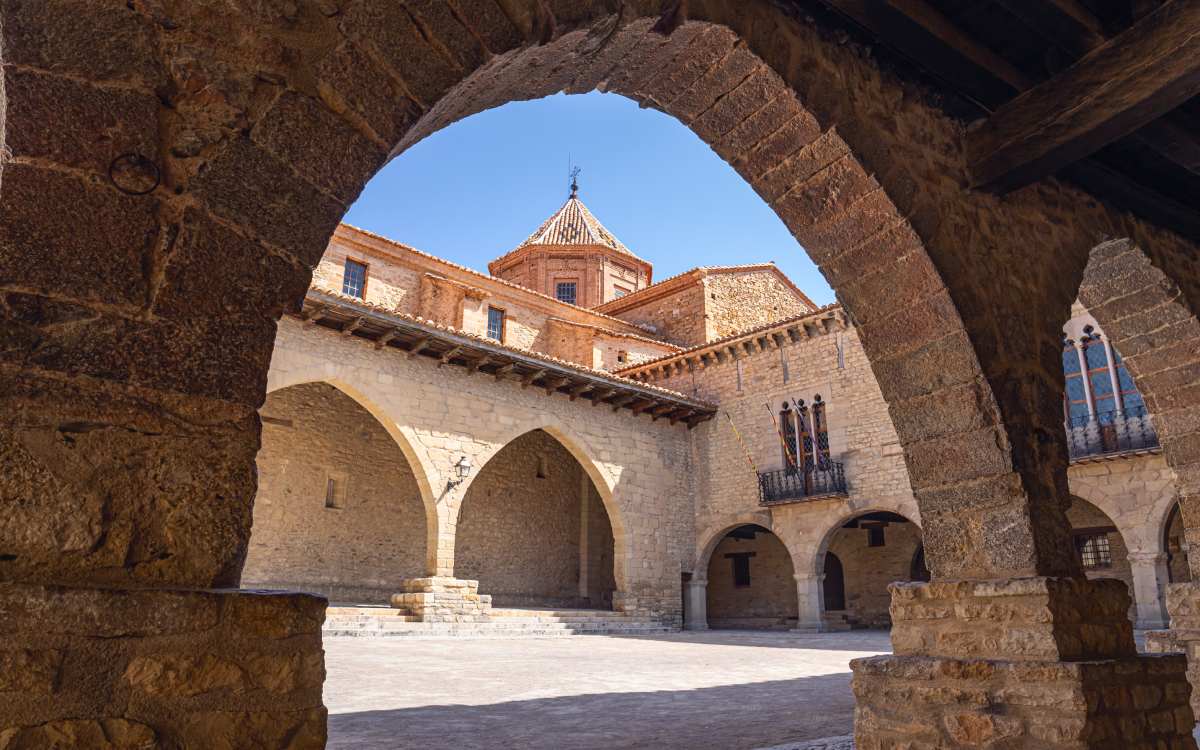 Cristo Rey Square, in Cantavieja. | Shutterstock
Cristo Rey Square, in Cantavieja. | Shutterstock
Cantavieja is one of the most beautiful villages in Teruel and now is one of the best Tourism Villages in the world thanks to its many attractions. Every step you take here will take you back in time. Unavoidably, the path will take you to a lovely arcaded square where another gem rises: the Iglesia de la Asunción. It is one of the largest temples in Teruel. It is said that its architect even explained that “there is no other like it, not even in Rome.” You should get to the top of its tower to admire its sights, appreciate the simple elegance of the town hall, visit the Museo de las Guerras Carlistas, or get lost in an environment of great beauty.
In spite of these charming qualities, Cantavieja seemed to be doomed to oblivion, as it usually happens with plenty of the villages in the heart of Teruel and this region of the Maestrazgo. Instead of assuming this unfortunate fate, the village worked to become a tourist destination. Its heritage, its history, its landscapes, and especially the hard work of its inhabitants to move forward while keeping alive its essence transform it into one of the best touristic villages in Spain, according to the UNWTO.
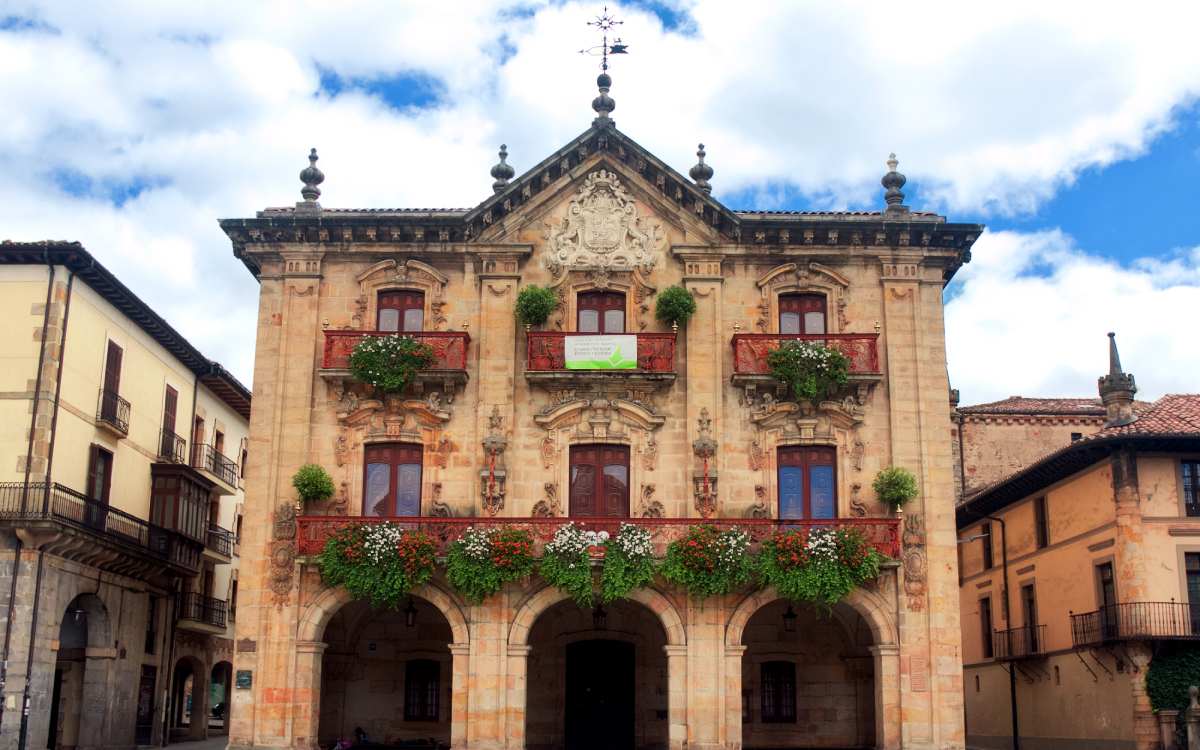
Oñati’s Town Hall. | Shutterstock
Oñati hides surrounded by mountains in the heart of Euskadi. Not only is it one of the most beautiful villages in Guipúzcoa, but it’s also the largest. This means that the list of touristic attractions you’ll find here is extremely long, so long that it’s now called “the Basque Toledo.” The differences between this place and Toledo are obvious, but the truth is that to walk around here is to walk around one of the most monumental villages in Euskadi.
Its old town centre is splattered with magnificent constructions that prove a splendorous past. It is easy to find outstanding palaces in your path, with old tower houses and breathtaking temples. To walk around Oñati is to explore a great part of the history of architecture, from the elegance of Gothic style to the Renaissance serenity, the Baroque ornamentation, or the most avant-garde tendencies.
Buildings such as the medieval Zumeltzegi tower house, the Lazárraga Palace, or the arcaded square of Plaza de los Fueros facing the town hall stand out from its historical heritage. We should mention the Plaza de Santa Marina and its Baroque palaces too, the breathtaking Iglesia de San Miguel, and, especially, the Sancti Spiritus University. This institution carried out its educational work in a magnificent building and hosted students until a century ago.
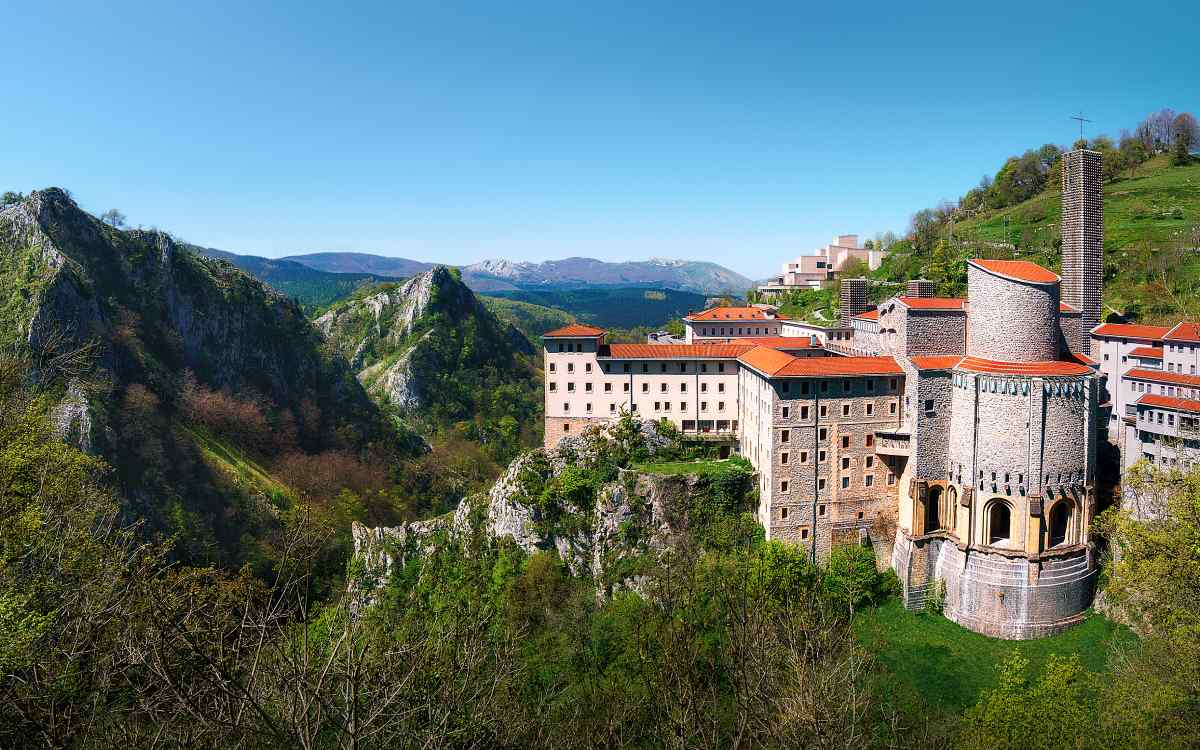
Arantzazu Sanctuary. | Shutterstock
A few kilometres from this beautiful town centre, one of the greatest spiritual temples in Euskadi awaits: the Santuario de Nuestra Señora de Arantzazu, patron saint of Guipúzcoa. Great Basque artists from the 20th century participated in the creation of this avant-garde architectural complex that stands out like a lighthouse in a landscape dominated by the forest and deep cliffs.
It is precisely in this environment that one of the most interesting caves in Euskadi hides. It’s the Cueva de Arrikrutz, the deepest one in Guipúzcoa. Remains of many prehistoric animals, such as the woolly rhinoceros, the Irish elks, and the Eurasian cave lions, have been found here.
Oñati has plenty of other treasures that have also been studied in order to grant it the recognition of Best Tourism Village. You can taste some of these treasures—the cheese, the txakoli, and a delight that surprises most of its visitors: chocolate. This village has a long chocolate production history that you can get to know better at its Centro de Interpretación del Chocolate. The sweetest ending to a visit to one of the most beautiful villages in Euskadi.
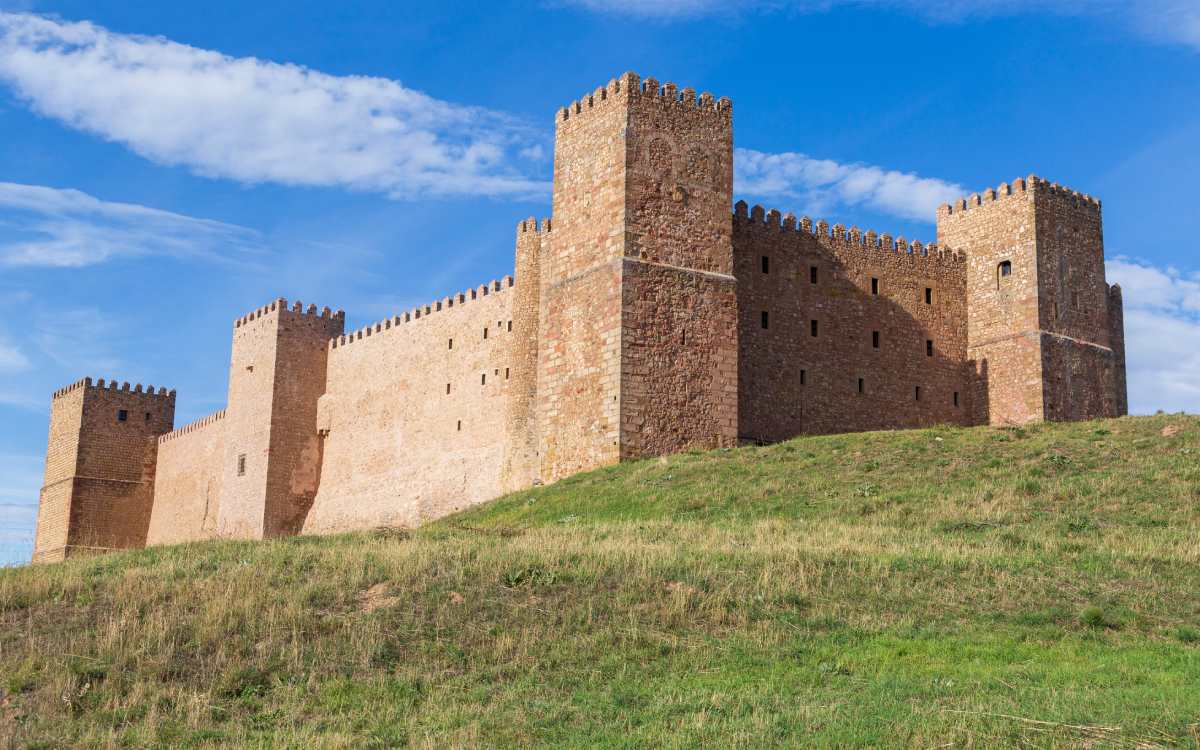
Sigüenza’s Castle. | Shutterstock
Sigüenza is probably one of the most renowned tourist villages in Spain. Doncel’s town always has a surprise, even for those travellers who have already been here. This is one of those localities where you want to come back even before you leave it behind, thanks to the large number of attractions it holds and has perfectly preserved, maintaining its medieval essence.
Its old town centre, declared a Historic-Artistic Site, is built around three pillars, the first being the castle. The walls of this impressive fortress have witnessed plots, betrayals, wars, and an abandonment that almost ended with it. Renovated and transformed into a parador, this castle is one of those places where you can sleep like a king or like a queen, although it is said that ghosts also sleep between its walls.
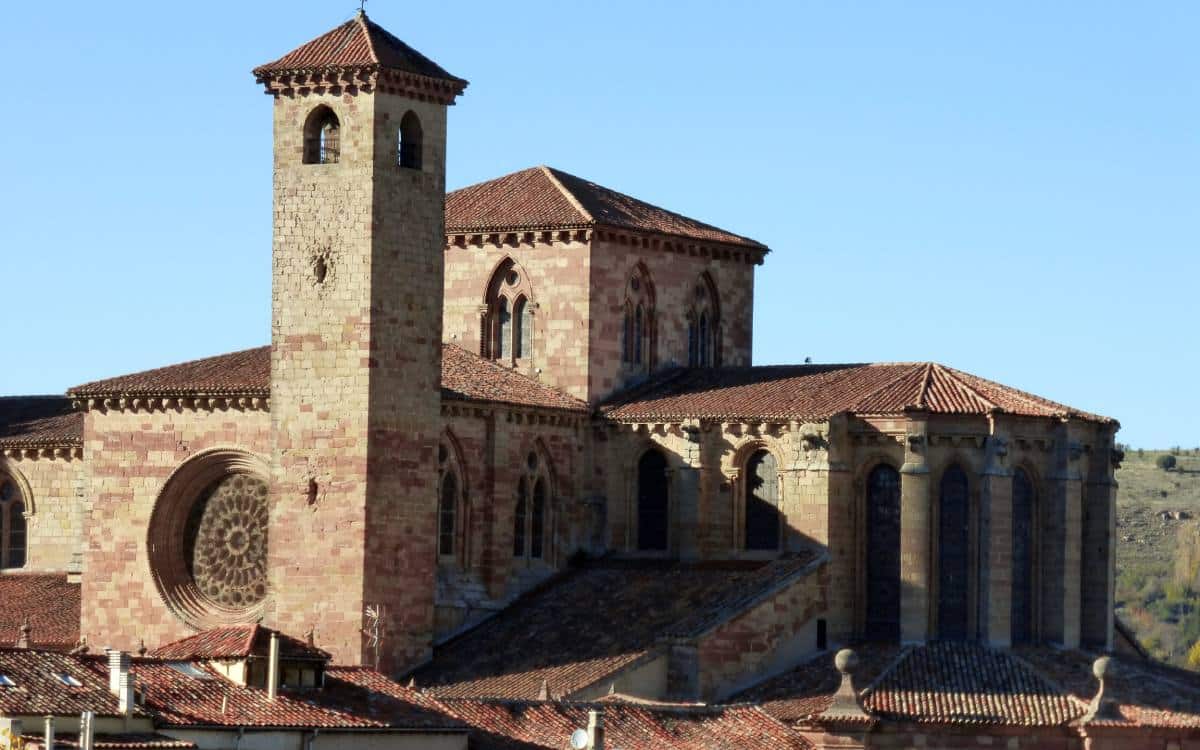
Sigüenza’s Cathedral. | Shutterstock
Sigüenza’s next treasure is one of the most charming squares in Spain. An arcaded square of Spanish Gothic architectural style surrounded by magnificent nobiliary buildings faces the third wonder in this locality: its cathedral. This isn’t any temple, but a singular fusion of architectural styles that houses one of the most exquisite funerary monuments in Spain for its Doncel. Who was he to deserve such a sepulchre? A young noble man who belonged to the Order of Santiago and died in the War of Granada.
The architectural heritage of Sigüenza goes even further. You just need to walk around its streets to discover the house of the Doncel, the Santiago and San Vicente churches, the Puerta del Sol, and many other corners full of art and history. And just a few kilometres away, a natural wonder awaits you: the Barranco del Río Dulce, which shelters a succession of caves, waterfalls, and rock formations where birds like vultures build their homes.
Sigüenza has profited from its rich heritage, its natural environment, and its gastronomy to promote cultural and sustainable tourism. For this reason, not only is it a reference in tourism, but it was also recognised as a Rural Tourism Capital a few years ago and has now been declared one of the best tourist villages in the world.